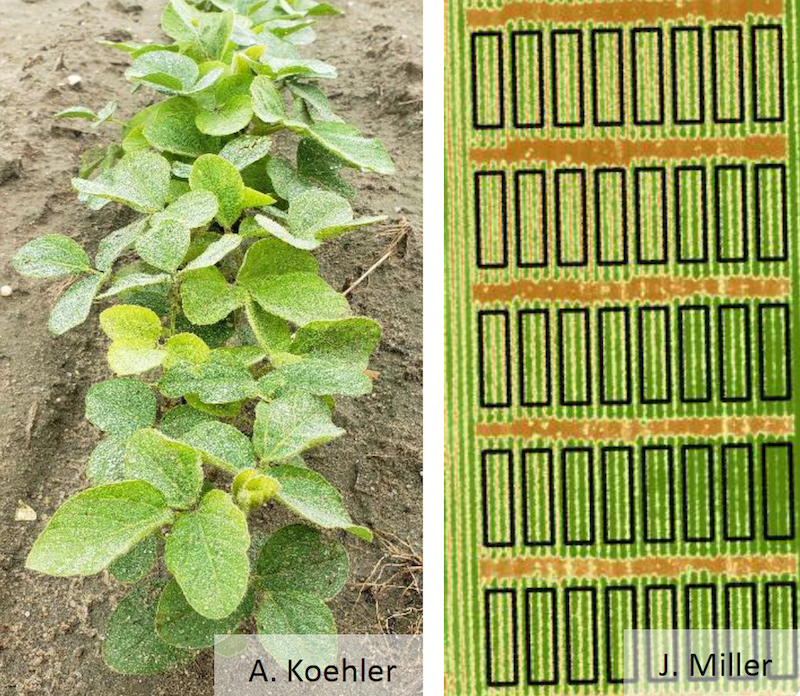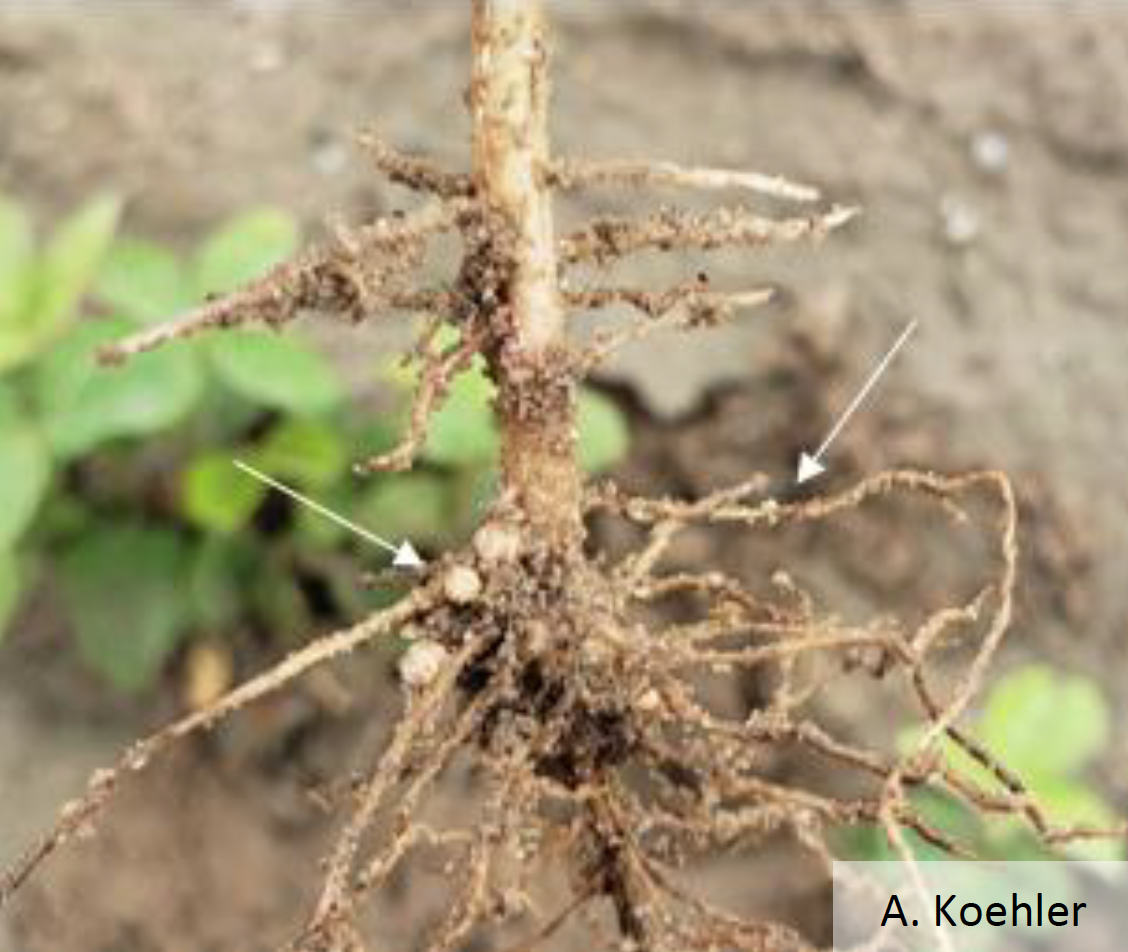
Fact Sheets And Publications
Soybean Cyst Nematode
Pest Background
- Soybean Cyst Nematode (SCN) is the most yield limiting pathogen of soybeans across the US.
- Often referred to as a “silent yield robber”, SCN may be present and reducing yield without notable aboveground symptoms (Fig 1A).
- Effectiveness of the PI88788 resistance gene has declined over the past decades, but this remains the dominant resistance source in most varieties.
Identification
- Nematode distribution is often patchy following lighter soils (Fig 1B)and symptoms can look very similar to other production challenges like nutrient deficiency, soil compaction, drought stress, or other diseases.
- Scout soybean roots to check for lemon-shaped SCN females early in the season (Fig 2) and collect fall soil samples to identify field population levels.

Fig 1:
Soybeans with healthy looking foliage,
but high levels of SCN in the soil (A); Light.
green areas showing stunted plants with
reduced biomass due to SCN (B)

Fig 2: Soybean root system with nodulation
(left arrow) and SCN females (right arrow)
Management
- Identification is crucial. Soil samples are best collected in the fall but can be conducted at any time.
- Dormant SCN eggs can wait in the soil for over 10 years without hatching, so SCN management requires an integrated approach.
- PI88788 remains the dominant source of resistance, but rotation to other sources such as Peking can help to lower populations.
- Rotate to non-host crops like corn, wheat, or sorghum.
- Multiple nematode-protectant seed treatments are available on the market. Results will vary among different products, growing seasons, and soil environments.
References
Crop Protection Network (2021, April 23). An overview of Soybean Cyst Nematode. Retrieved from: https://cropprotectionnetwork.org/publications/an-overview-of-soybean-cyst-nematode
https://www.thescncoalition.com/
Authors: Madeline Henrickson and Dr. Alyssa Koehler
UD Cooperative Extension
This institution is an equal opportunity provider.
In accordance with Federal law and U.S. Department of Agriculture policy, Cooperative Extension is prohibited from discriminating on the basis of race, color, national origin, sex, age, or disability.
